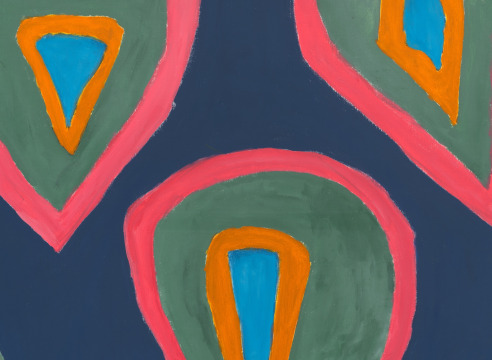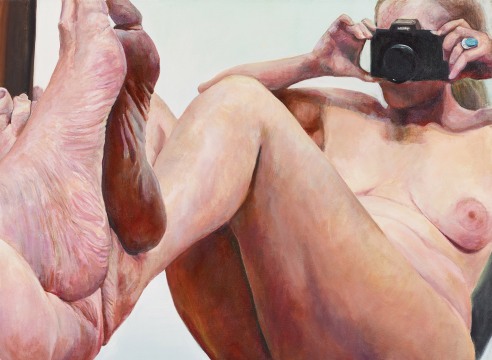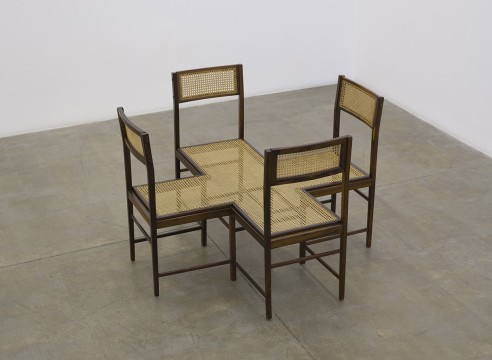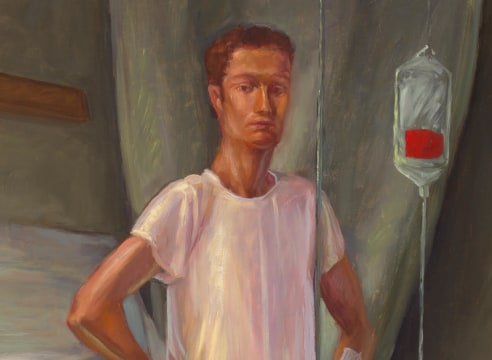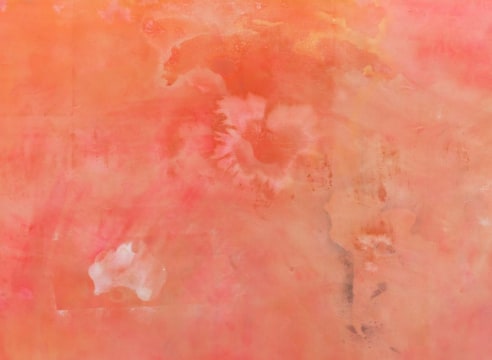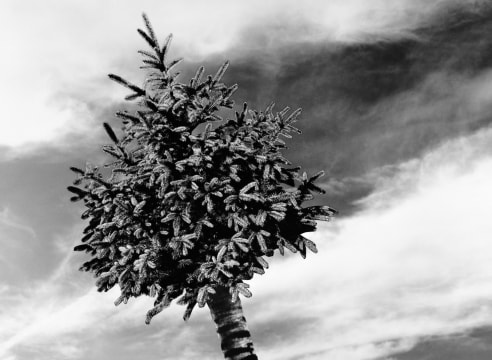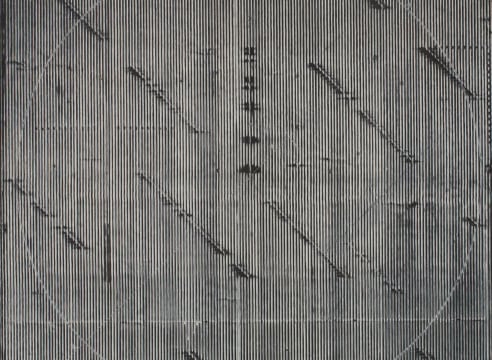
Frieze Los Angeles 2019 | February 14–17, 2019
Paramount Studios, Los Angeles, CA.
Alexander Gray Associates presents recent and historical paintings and sculptures by Hugh Steers, Frank Bowling, Melvin Edwards, Lorraine O’Grady, Betty Parsons, Joan Semmel, Valeska Soares, and Jack Whitten. Featuring a range of abstract and figurative works, the Gallery’s display foregrounds these artists’ commitment to challenging conceptual, formal, and sociopolitical conventions.
Hugh Steers' work anchors the Gallery’s presentation. Before his death at 32 from AIDS related complications, Steers created allegorical images that captured the emotional and political tenor of New York in the late 1980s and early 1990s. Embracing representational painting and figuration at a time when such approaches were deemed unfashionable, his intimate compositions are poignant symbols of life under the specter of AIDS.
Depicting mundane moments rendered extraordinary through dramatic light and rich colors and fabrics, Steers’ art communicates joy even in the face of despair. At the same time, by painting everyday moments imbued with a disconcerting charge, his scenes invite ambiguous narratives of alienation, defiance, illness, mortality, and compassion. In Blue Dress (1992), Steers depicts a man in heels trying on a dress in front of a mirror. Inviting competing readings of sexuality and isolation, the tableau alludes to the treacherous social and political landscape gay men were forced to navigate during the AIDS epidemic.
Ultimately, while Steers described his images as “metaphors that come from very specific needs and things on my part,” during his life, he repeatedly insisted that the meanings of his paintings depended on what the viewer brought to them. His images—sensuous and unsettling—gain new resonance in a contemporary art landscape informed by a return to figuration and a critical reappraisal of art from the 1980s and early 1990s.
Since the 1960s, Frank Bowling’s painting practice has been defined by an integration of autobiography and postcolonial geopolitics into abstract compositions. In the 1980s, Bowling sought a way to combine his interest in relief painting with the atmospheric effects of classic landscape painters like Constable, Gainsborough, and Turner. He discovered that thick layers of gel created surface effects that, in his eyes, matched Constable’s use of impasto. In Swissvisit I (1983), Bowling combines abstract flatness with references to natural light, constructing a canvas that combines a rigorous modernist emphasis on optical effects with a chromatic sensibility indebted to eighteenth-century painting.
Melvin Edwards’ sculptures reflect his engagement with the history of race, labor, and violence, as well as with themes of the African Diaspora. Harlem (1986) is from Edwards’ ongoing series of Lynch Fragments. A welded amalgamation of industrial elements, including pipe and bolts, Harlem pays homage to the celebrated New York neighborhood that has long been synonymous with Black culture.
For more than four decades, Lorraine O’Grady has sought to confront the limitations of a culture built on exclusivity and resistance to difference. The Fir-Palm (1991/2012), a black-and-white photomontage, depicts a hybrid New England fir–Caribbean palm tree sprouting from a female torso. With this symbolism, O’Grady—born and raised in Boston to Jamaican parents—questions the nature of desire, identity, and stability in a society rooted in physical, psychological, and cultural hybridity.
Betty Parsons was an abstract painter and sculptor who set out to capture the “invisible presence” of life. Her canvases combine the flat formalism of Color Field painting with allusions to nature, time, and the ephemeral. In A Spring Start (1976), Parsons’ practice of close observation is realized in a cascade of shapes in the layered colors of dispersed sunlight, which punctuate a solid background the color of young greenery.
Since the 1970s, Joan Semmel has centered her practice around representations of the body from a female perspective, often focused on self-portraiture. In recent years she has returned to the brilliant colors first seen in the Sex Paintings for which she gained recognition early in her career. The Velvet Couch (2019) features Semmel’s body as a diagonal band of light across a sumptuous purple background. The loose brushwork, itself full of color, traces back to her roots in Abstract Expressionism.
Utilizing tools of minimalism and conceptualism, Valeska Soares’ practice embraces emotion and humanity, mining territories of love, loss, and memory. In Doubleface (Cobalt Green) (2017), part of a series of Doubleface portraits, Soares transforms a vintage oil painting into a monochrome, evoking the allure and mystery triggered by covered objects.
A pioneer of abstract painting, Jack Whitten pushed the boundaries of the medium through innovative materials, methods, and processes. Featuring blurred horizontal lines of paint, Untitled I (1974—1975) reveals Whitten’s interest in developing alternative approaches to painting that eschewed the painterly gestures of Abstract Expressionism. His unique approach to painting reflects on the legacy of modernism and abstraction and is aligned with the work of contemporaries like Sam Gilliam, Al Loving, and Frank Bowling.
About Frieze Los Angeles
Frieze Los Angeles 2019 will bring together around 70 of the most significant and forward-thinking contemporary galleries from across the city and around the world, alongside a curated program of conversations, site-specific artists’ projects and film.






















